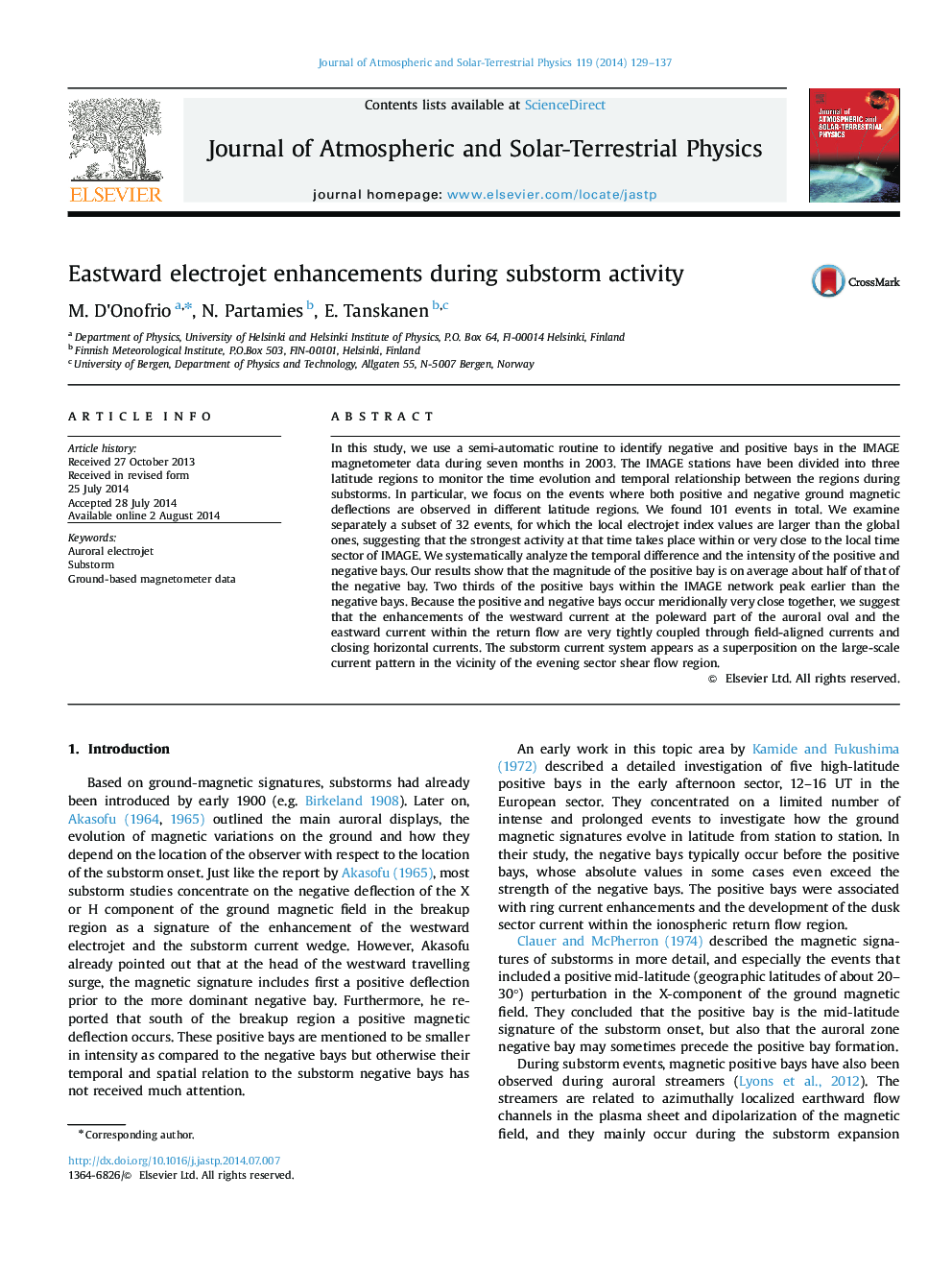| Article ID | Journal | Published Year | Pages | File Type |
|---|---|---|---|---|
| 8140156 | Journal of Atmospheric and Solar-Terrestrial Physics | 2014 | 9 Pages |
Abstract
In this study, we use a semi-automatic routine to identify negative and positive bays in the IMAGE magnetometer data during seven months in 2003. The IMAGE stations have been divided into three latitude regions to monitor the time evolution and temporal relationship between the regions during substorms. In particular, we focus on the events where both positive and negative ground magnetic deflections are observed in different latitude regions. We found 101 events in total. We examine separately a subset of 32 events, for which the local electrojet index values are larger than the global ones, suggesting that the strongest activity at that time takes place within or very close to the local time sector of IMAGE. We systematically analyze the temporal difference and the intensity of the positive and negative bays. Our results show that the magnitude of the positive bay is on average about half of that of the negative bay. Two thirds of the positive bays within the IMAGE network peak earlier than the negative bays. Because the positive and negative bays occur meridionally very close together, we suggest that the enhancements of the westward current at the poleward part of the auroral oval and the eastward current within the return flow are very tightly coupled through field-aligned currents and closing horizontal currents. The substorm current system appears as a superposition on the large-scale current pattern in the vicinity of the evening sector shear flow region.
Keywords
Related Topics
Physical Sciences and Engineering
Earth and Planetary Sciences
Geophysics
Authors
M. D'Onofrio, N. Partamies, E. Tanskanen,
